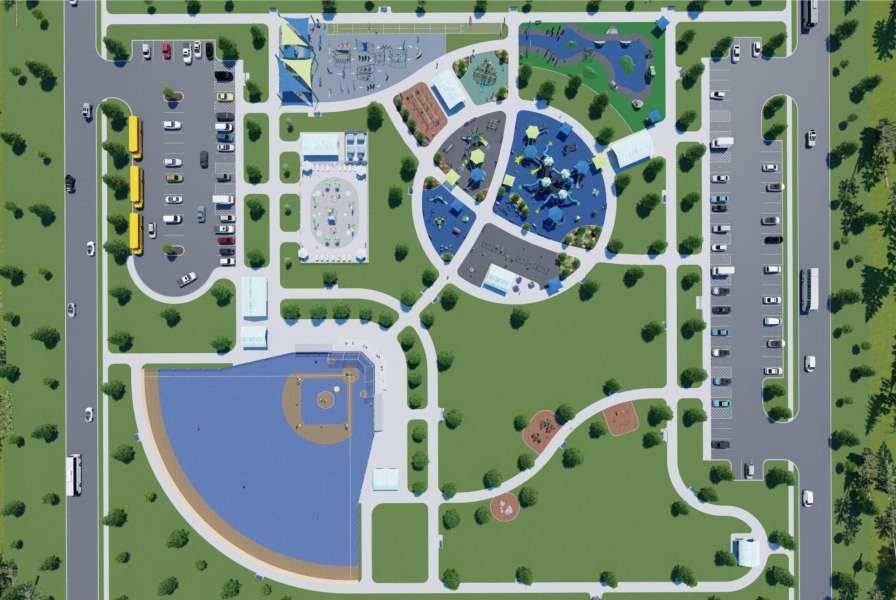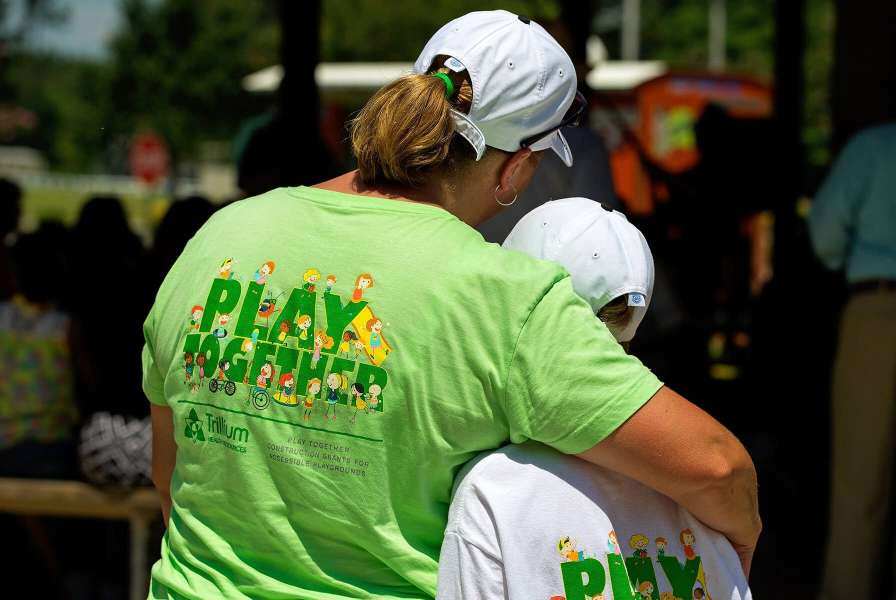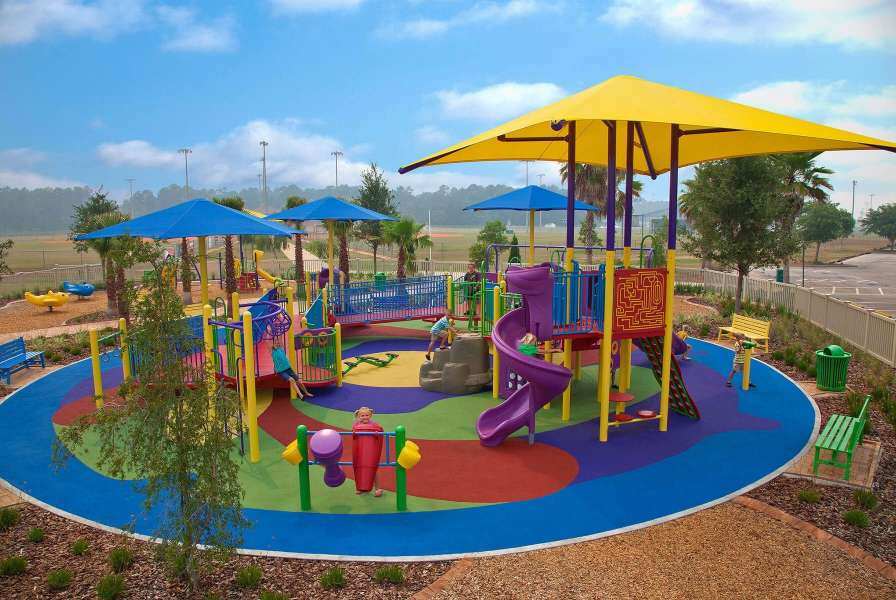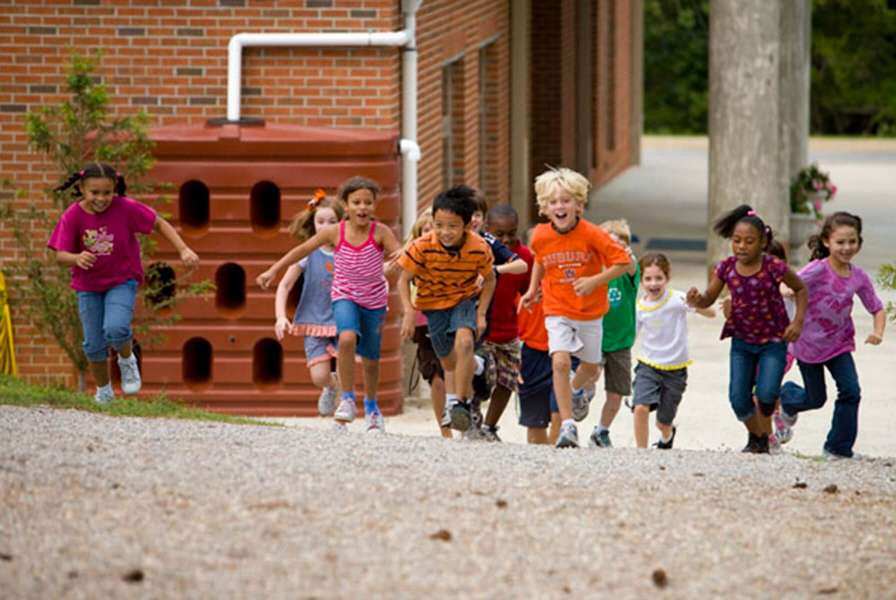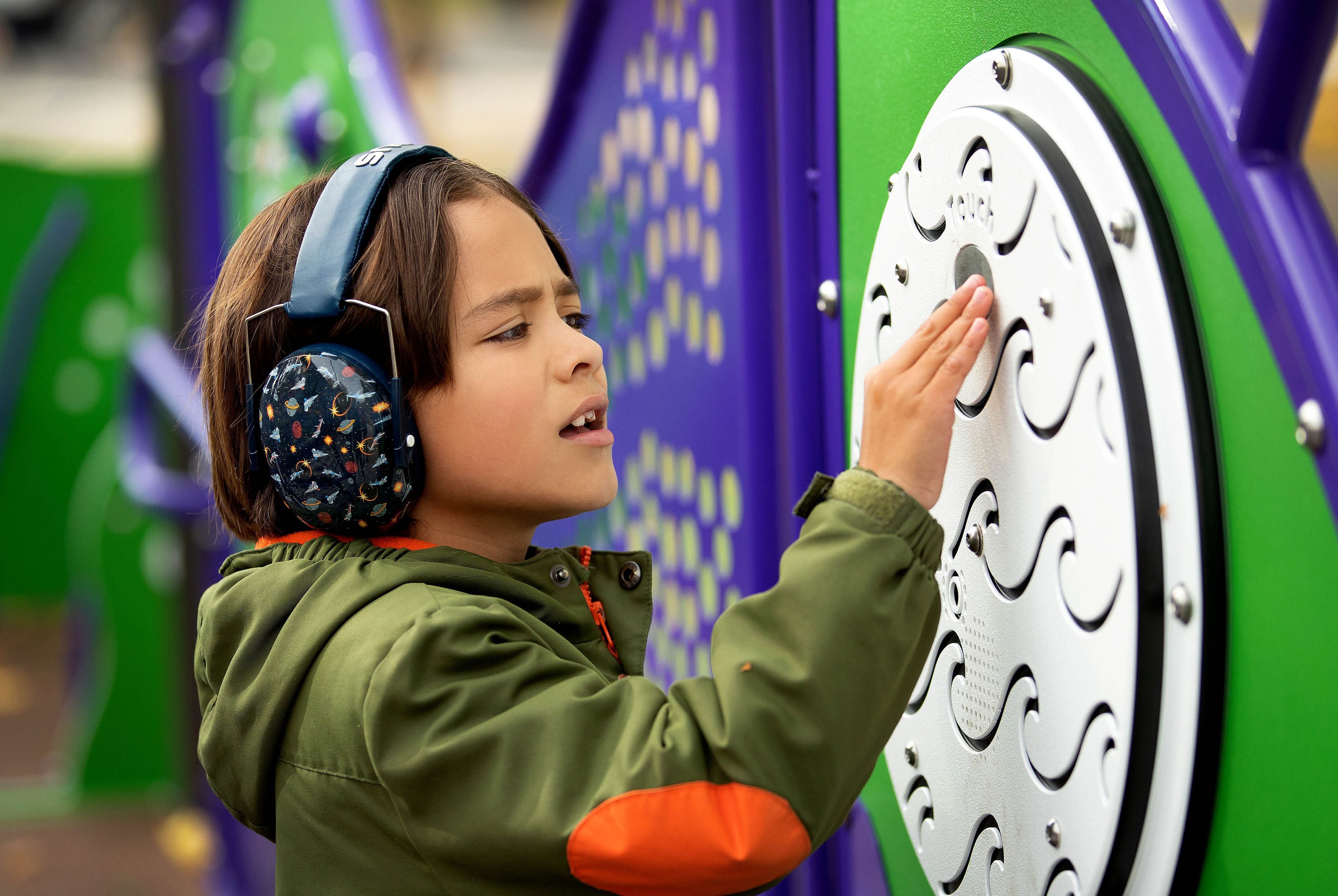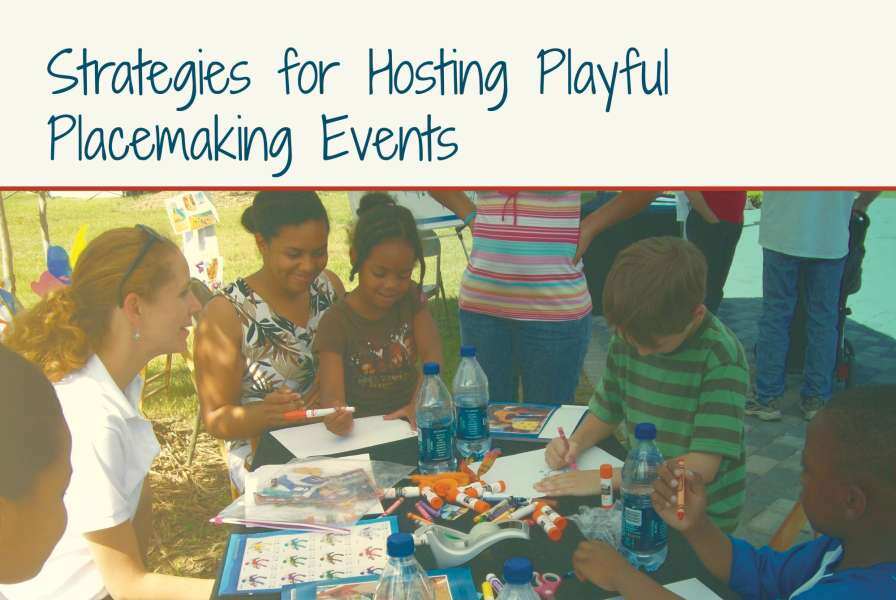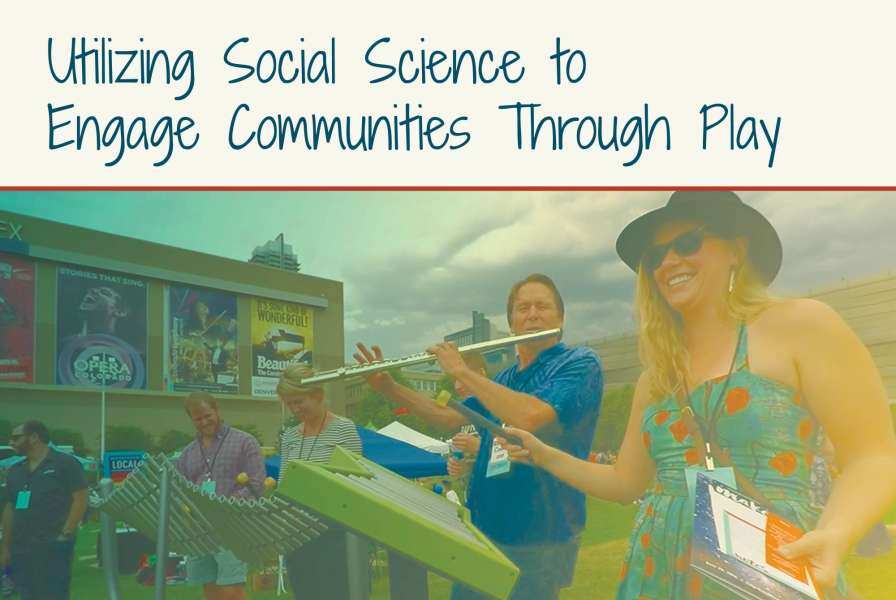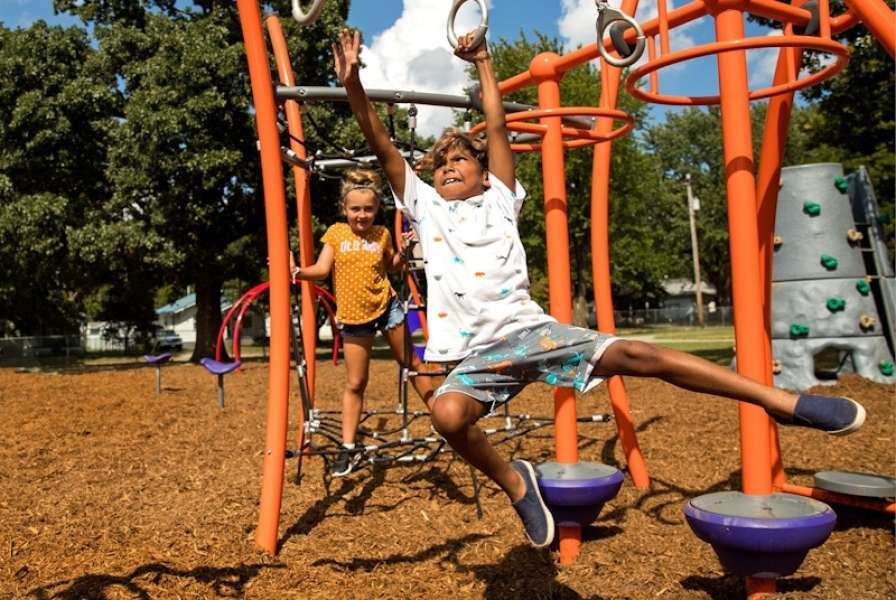In order to create inclusive community park experiences, considerations must include the needs of the whole environment and the whole community. Use this comprehensive park checklist to thoughtfully create a welcoming atmosphere and outdoor play and recreation destinations that are more usable, by more people, to the greatest extent possible.
1. Parking
-
-
More than the minimum required accessible parking spaces that include van spaces with wider access aisles and appropriate signage.
-
Parking areas conveniently located to create an accessible route to the park entrance(s).
-
2. Pathways
-
-
Firm and stable surface materials along accessible connecting routes (concrete, asphalt, or boardwalk preferred).
-
Railings and edge protection on routes with running slopes greater than 5% or where there is a drop off.
-
3. Surfacing
-
-
Unitary, fall attenuating safety surfacing, such as poured-in-place rubber provides the most consistent surface for accessibility in play and recreation environments.
-
Various surface materials textures or colors to provide cues to help visually organize the environment so that it is easier to navigate and understand.
-
4. Playgrounds
-
-
Robust assortment of activities that thoughtfully meet the physical, social-emotional, communication, sensory, and cognitive needs of all people, including those with disabilities.
-
Go beyond the minimum ADA Standards for Accessible Play Areas to meet the 7 Principles of Inclusive Playground Design®, the only evidence-based design best practices for inclusive play environments. Visit playcore.com/inclusion to request the design guidebook.
-
Selection of playground equipment that has intentionally been designed to provide additional gross motor and fine motor supports for more active, independent play.
-
Accessible routes to, around, and on the play equipment, using unitary safety surfacing and accessible ramps.
-
5. Wayfinding
-
- Accessible visual signage that identifies accessible routes and facilities within the site
- Picture symbols to identify equipment with raised images, words, Braille, etc.
- Bilingual options on signage, QR codes with videos, or options to download in different languages.
- Detailed website information about the park and inclusive features.
- Tactile 3D site models where possible.
- Various surface material textures or colors to provide behavioral cues and help visually organize the environment so that it is easier to navigate and understand.
6. Site Amenities
a. Accessible Toilet and Bathing Facilities:
-
-
-
- Accessible sink(s) with touchless operation.
- Paper towel/hand drying features within accessible reach ranges.
- Family/Unisex restroom with at least one adult size changing table.
- Signage with Braille characters and raised pictorial symbols at toilet room doors.
-
-
b. Picnic Tables:
-
-
-
- Tables positioned on an accessible route and protected from weather by using shade or shelters where possible.
- Wheelchair spaces integrated into picnic tables which allow space for multiple individuals that use mobility devices to comfortably gather at the same table and offer choices of where to sit.
-
-
c. Benches/Sitting Areas:
-
-
-
- Adjacent accessible wheelchair spaces/areas near benches with a firm and stable surface.
- Shade trees or shade structures surrounding seating areas to increase comfort.
- Back and armrests on benches when possible.
- Benches with charging ports for personal electronic devices and mobility devices.
-
-
d. Shade and Shelters:
-
-
-
- A combination of integrated shade (manufactured) and natural shade (tree canopy) offers relief from elements and increased comfort.
- Shade shelters and pavilions on an accessible route and provide a firm and stable surface throughout.
-
-
e. Drinking Fountains and Water Bottle Filling Stations:
-
-
-
- A wheelchair accessible and a standing height drinking fountain provided at each location.
- Stations to include accessible features such as switch/bar or automatic touchless sensors.
-
-
f. Universal Fields:
-
-
-
- Each area of sport activity is connected with at least one accessible route.
- Unitary surfacing on fields that permit wheelchair access and play.
- Wheelchair accessible dugouts with a wheelchair space adjacent to team benches.
-
-
g. Customer Service Areas:
-
-
-
- Wheelchair accessible sales and service counters no higher than 36 inches.
- Accessible point of sale systems.
- Condiment stations within accessible reach ranges.
- Menus in large print, pictures, and Braille.
-
-
h. Bleachers/Spectator Seating:
-
-
-
- Wheelchair spaces integrated within each spectator seating area.
- Circulation paths are behind the designated wheelchair spaces to avoid obstructing the view.
-
-
i. Aquatic Play Environments:
-
-
-
- Aquatic access wheelchairs of varied sizes for adult and child visitors are available to use.
- Changing/bathing facilities include an accessible changing bench.
- Showers provide a handheld shower device and a shower bench for transfer in each accessible shower.
-
-
j. Dog Parks & Pet Amenities:
-
-
-
- Pet waste, water stations, and gate latches are positioned at an accessible approach, reach heights, and operation for individuals using mobility devices.
- Accessible route and surface to and throughout the environment.
-
-
k. Adult Outdoor Fitness Parks:
-
-
-
- Universally designed equipment that provides individuals using mobility devices the opportunity to engage in aerobic and muscle strengthening activities alongside others.
- Accessible routes of travel to and around the equipment and include safety surfacing when appropriate.
- Signage with simple graphics and verbiage for instruction or QR codes to provide video instruction.
-
-
l. Musical Instruments:
-
-
-
- Musical elements installed on an accessible route with a hard surface, and at an appropriate height so that individuals of various sizes and individuals using wheelchairs can comfortably approach and reach the activity.
- Adapted mallets to promote independence and usability for individuals that need additional fine motor support.
-
-
m. Communication:
-
-
-
- Opportunities for visitors to communicate through pictures and/or symbols that are easy to recognize, paired with the written word, and are organized using color-coding to represent different parts of speech.
- Communication Boards installed on an accessible route with a hard surface, at an appropriate height so that individuals of various sizes and individuals using wheelchairs can comfortably approach and point to or gaze at picture symbols.
- Printed communication boards for download or available to check out for visitors and/or their caregivers to use in preparation for and during their visit.
-
-
Special Events & Programming:
-
- Activities located on accessible routes and with accessible surfacing.
- Accessible portable toilet facilities and parking at temporary events.
- Sign language or bilingual interpretation at special events.
- Special events designed and marketed to include people of all abilities to play and interact with each other in meaningful play and interaction.
- Adaptive equipment such as all-terrain wheelchairs, adaptive swing harnesses, adaptive switches for play panels that offer switch capability, and adaptive sports equipment available for visitors to check out or to use during programs/events.
- ‘Sensory Kits’ that include noise cancelling headphones, fidget toys, communication boards or picture symbols, or other adaptive tools available for visitors to reserve/check out.
